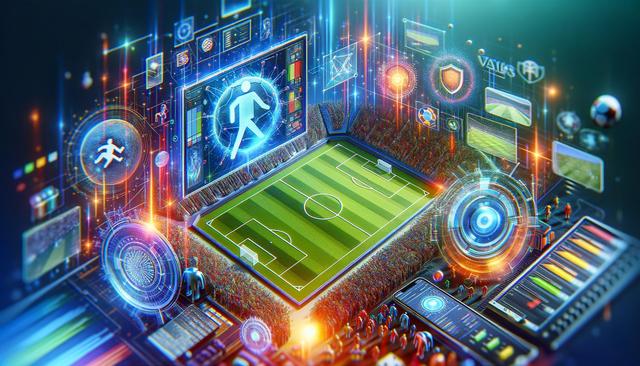Analyzing the Impact of VAR and AI in Modern Sports Decisions
The integration of technology in sports has revolutionized decision-making processes, with tools like VAR and AI playing a pivotal role.

The Rise of VAR in Sports
The advent of Video Assistant Referee (VAR) technology has brought a significant transformation to the world of sports, particularly in football. This system was introduced to minimize human error and enhance fairness in the game. By allowing referees to review decisions such as goals, penalties, and red cards through video footage, VAR aims to ensure that the final verdict is as accurate as possible. The technology operates by having a team of officials who monitor the game from various camera angles and communicate with the on-field referee through an earpiece. While its implementation has been met with both praise and criticism, VAR undeniably adds a layer of transparency and accountability to sports, fundamentally changing how decisions are made and perceived by players, coaches, and fans alike.
AI’s Role in Modern Sports
Artificial Intelligence (AI) is making inroads into sports, offering new possibilities for analyzing and improving performance. AI systems can process vast amounts of data and provide insights that were previously unachievable. In terms of decision-making, AI helps in predicting outcomes, analyzing player performance, and even designing game strategies. Sports teams are increasingly turning to AI to gain a competitive edge, whether through machine learning algorithms that assess player health and fitness or through predictive models that suggest optimal game tactics. This technology not only aids in immediate decision-making but also helps in long-term planning and development, giving teams a strategic advantage in highly competitive environments.
Challenges and Controversies
Despite the advancements, the integration of VAR and AI in sports is not without its challenges and controversies. Critics of VAR often point to the interruptions it causes during games, which can disrupt the flow and emotional intensity of a match. There is also concern about the subjective nature of some decisions, even with video evidence, leading to debates over the consistency and fairness of its use. Similarly, AI’s reliance on data raises questions about privacy and data security, as well as the potential for bias in algorithmic decision-making. The balance between technology and the human element of sports continues to be a topic of debate, with stakeholders striving to find a harmonious coexistence.
Benefits of Technological Integration
The introduction of VAR and AI in sports has brought numerous benefits that have enhanced the integrity and excitement of the games. Some of the advantages include:
- Improved accuracy in decision-making, reducing human error.
- Enhanced fairness and transparency, leading to greater trust among players and fans.
- Advanced analytics for performance improvement and strategic planning.
- Real-time feedback and adjustments, allowing for dynamic gameplay.
These benefits underscore the potential of technology to elevate sports to new heights, providing a more engaging and fair experience for all participants.
Conclusion
As technology continues to evolve, its role in sports will likely expand, offering even more sophisticated tools for decision-making and performance enhancement. VAR and AI represent just the beginning of a broader digital transformation in sports, promising to make games more exciting, equitable, and competitive. While challenges remain, the potential benefits of this technological integration are substantial, making it an exciting time for athletes, fans, and stakeholders who are all invested in the future of sports.